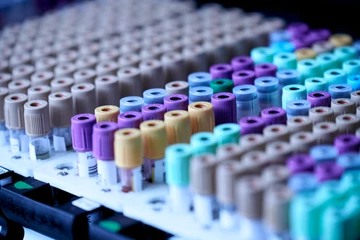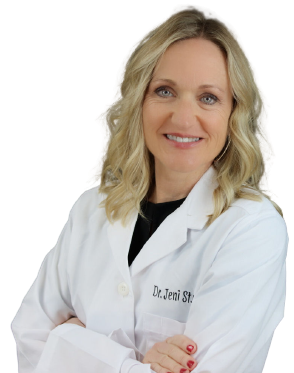I see a lot of women in my practice (and men, too, but my practice is mostly female 🙂 who struggle with thyroid issues. In fact, it’s the NUMBER 1 issue I see in my practice. And, I believe the issue stems from the fact that most doctors look at a small snapshot of the thyroid and make decisions. They fail to evaluate the whole issue and to look at in the context of the rest of the person’s medical landscape. In other words, they are treating a symptom, not trying to treat a person.
So, I wanted to write an article on what I believe to be the proper way to evaluate a Thyroid functionally so that a person can understand what is really going on and get to the root of the problem.
The first thing I think is important to ask is what is the Thyroid gland really doing. I think we need to do a couple of things in order to do that:
- Ask Questions. Take a really thorough history and listen to people about what is going on in their life and with their health. So many things can play into thyroid issues, like stress, exposure to infection, food sensitivies, etc. We need to know about these things.
- Run the right labs and look at them with a “functional” lens vs. a traditional “In the reference range” lens. By running the right combo of labs and evaluating them properly, I think we really paint the whole picture. So what are these labs?
- TSH or Thyroid Stimulating Hormone – This tells us if our body perceives that we have enough thyroid hormone. If it perceives us to be low, it cranks up TSH in an effort to produce more thyroid hormones. The opposite is true also. If we have too much thyroid hormone, this number goes down. The reference range is really wide on this, but most functional doctors, including myself, will tell you that between 1.0 and 2.0 for this is the ideal functional range where most people feel well.
- Thyroxine or T4 – You can test this as “T4” or “Free T4” – What’s the difference? The T4 will be bound to proteins in the blood. Free T4 is what is free and useable. Looking at Free T4 tells us how much of the hormone we have available to convert and use. From a functional perspective, that is very helpful. Ideally, you want this to be in the upper 1/4 of the reference range.
- Triiodothyronine or T3 – This is the form of the hormone that is active. It must be converted from T4 to T3. This is left off most tests. But, it’s very important to know if you have thyroid dysfunction, whether or not there is a problem with this conversion. If you can make enough T4, but are not converting it properly to T3, then we need to look at why. Low levels of nutrients are very important here. Zinc and Selenium are two of the most important nutrients in this conversion, and are deficient in many individuals. The upper 1/4 of the reference range is a great place to be with this number as well. If the Free T4 is high, but the Free T3 is relatively lower, you know there could be a conversion issue.
- Reverse T3 – I like to describe this as a “fake” or “imposter” form of T3 because it is inactive. T4 is either converted to T3 by losing an atom of iodine (like it should be) or it is converted to Reverse T3 (which we don’t want). One of the things that I see that increase this conversion is eating too little. A low calorie “starvation” diet can foster this conversion over the conversion to T3. Unfortunately, many people struggling with their thyroid keep cutting back on calories and can actually be making things worse. Other issues that may be involved here are gluten consumption, and the use of products that have halogens in them – like flouride toothpaste and eating berries and wheat products have bromine or bromide solutions involved in their processing. For berries, this is the pesticides sprayed on them if they are not organic. In wheat, it is the bleaching and brominating of the wheat while processing it. A reverse T3 level above 17 is an invitation to look at ways we can help better convert T4 into T3 and not reverse T3. It is very rare that this marker makes it on a test unless you are working with a functionally-minded provider.
- Thyroid Peroxidase (TPO) and Thyroglobulin Antibodies (TG) – These are two different markers, but I am going to group them together because they are both antibodies to your own thyroid tissue. You should have very low levels of these antibodies. The more you have, the more your body is breaking down the thyroid gland. I use the range of <5 on TPO antibodies and < 1 on TG antibodies. When these are elevated, they indicate your own body is breaking down your thyroid gland. This is an auto-immune condition. If you thyroid has slowed down we call this Hashimoto’s Thyroiditis. If it is Overactive, we call it Grave’s disease. Either way, in order to truly heal and feel better, we must figure out why your body is under attack from itself! Many doctors don’t offer this because they are not going to help with the discovery process of addressing the auto-immune trigger. In approx. 90% of Hypothyroid cases, this is the cause of the problem, and if people are not being made aware, they can not truly address the root cause. If auto immunity is involved, now we go through the process of figuring out what the triggers are. Common triggers are food sensitivities that cause an immune reaction, past infections or stress and/or trauma (child birth can be this trigger!)
As you can see, a proper thyroid work-up includes many things, and asking many questions to get to the source of the issue. If you have a thyroid issue or suspect you have a thyroid issue, it’s important to have all the information so that you can help heal your body and feel your best. You can ask you doctor for these labs. If you would like to reach out to me and discuss having me help you with these, my team is happy to answer any questions you might have and help however we can! You can reach out to us using this link.
To your health,
Dr. Jeni


